Service 24/7/365
info@gypsycabnosara.com
Phone: + (506) 8302-1903
info@gypsycabnosara.com
- About
- Contact
- Publications
- LIR Airport – Nosara
- SJO Airport – Nosara
- Other Services
- My account
- Cart
- About
- Contact
- Publications
- LIR Airport – Nosara
- SJO Airport – Nosara
- Other Services
- My account
- Cart
Nosara Eco-tourism and Wildlife

The Rise of Ecotourism
Defining Ecotourism
Ecotourism, a term that has gained immense popularity over the past few years, refers to responsible and sustainable travel to natural areas. It aims to conserve the environment, preserve local culture, and empower local communities through financial benefits.
What Attracts Eco-tourists?
Eco-tourists are drawn to destinations that offer unique natural beauty, abundant biodiversity, and opportunities for meaningful cultural exchanges. They seek authentic experiences and are committed to minimizing their environmental footprint during their travels.
Top 3 Examples of Eco-tourism
Example 1: Galapagos Islands, Ecuador
The Galapagos Islands, a UNESCO World Heritage Site, is a prime example of ecotourism. The islands boast diverse wildlife, and strict regulations ensure the ecosystem remains pristine and protected.
Example 2: The Great Barrier Reef, Australia
Australia’s Great Barrier Reef, another UNESCO World Heritage Site, is a sought-after destination for eco-tourists. The reef, teeming with marine life, offers various eco-friendly activities, such as snorkeling and diving, that have minimal impact on the environment.
Example 3: The Amazon Rainforest, Brazil
The Amazon Rainforest, often called the “lungs of the Earth,” is a vital eco-tourism destination. Home to a vast array of plants, animals, and indigenous communities, the Amazon Rainforest offers eco-tourists an unparalleled immersion into nature.
Costa Rica: A World Leader in Eco-tourism
The Ecotourism Capital of the World
Costa Rica has been hailed as the eco-tourism capital of the world, and for a good reason. With its lush rainforests, stunning beaches, and diverse wildlife, it’s a paradise for eco-tourists seeking adventure and sustainability.
Costa Rica’s Range of Wildlife
Costa Rica is famous for its incredible biodiversity, which includes over 500,000 species of plants and animals. Some of the most iconic creatures found in the country are the resplendent quetzal, the three-toed sloth, and the keel-billed toucan. The country’s dedication to conservation has made it a haven for wildlife enthusiasts.
Costa Rica’s Unique Ecosystem
The ecosystems in Costa Rica are as diverse as their wildlife. From tropical rainforests and cloud forests to mangroves and coral reefs, the country offers a variety of habitats that support its rich biodiversity. This makes it an ideal destination for eco-tourists who want to experience different ecosystems in a single trip.
Nosara, Costa Rica: A Must-Visit Destination for Eco-tourists
The Biggest Tourism Area in Costa Rica
Nosara, located on the Pacific coast of Costa Rica, has become one of the country’s most popular eco-tourism destinations. With its pristine beaches, lush jungles, and world-class surf breaks, Nosara has something to offer for every type of eco-tourist.
Ostional Nacional Wildlife Refuge
The Ostional Nacional Wildlife Refuge is a must-visit spot in Nosara. This protected area is famous for being one of the world’s most important nesting sites for Olive Ridley sea turtles. During nesting season, thousands of turtles come ashore to lay their eggs, creating a unique and unforgettable spectacle for visitors.
Sea turtles are one of the most ancient creatures in the world. They have been around for over 100 million years and have survived multiple mass extinctions. Sadly, however, all seven species of sea turtles are now classified as endangered or critically endangered due to a variety of human-caused threats such as habitat destruction, pollution, and poaching. The Ostional National Wildlife Refuge in Costa Rica was established to protect one of the most important nesting sites for sea turtles in the world.
The Refuge’s Location and History
The Ostional National Wildlife Refuge is located on the northwest coast of Costa Rica, in the province of Guanacaste. It was established in 1984 to protect the massive nesting of Olive Ridley sea turtles that occurs on its beaches. The Refuge covers an area of 2,735 hectares, including the beach, the adjacent mangroves, and the ocean up to 12 nautical miles from the coast.
The Importance of the Refuge
The Ostional National Wildlife Refuge is home to the largest nesting population of Olive Ridley sea turtles in the world. Each year, between July and December, hundreds of thousands of female sea turtles come ashore to lay their eggs on the beach. This phenomenon, known as an “arribada,” can sometimes involve over 100,000 turtles in a single night. The eggs are buried in the sand, and after around 50 days, the baby turtles hatch and make their way to the ocean.
Threats to the Sea Turtles
The Olive Ridley sea turtles that nest on the beaches of the Ostional National Wildlife Refuge face many threats, both natural and man-made. Natural threats include predators such as birds, crabs, and snakes, while man-made threats include poaching, habitat loss, and pollution. In the past, the eggs of the turtles were harvested for human consumption, and the adults were hunted for their meat, shells, and oil. Today, poaching is strictly prohibited, and the Refuge’s rangers work hard to protect the turtles from harm.
Conservation Efforts
The conservation efforts at the Ostional National Wildlife Refuge are based on a unique management strategy called the “Ostional Wildlife Refuge Model.” The model is a collaboration between the local community, the Costa Rican government, and non-governmental organizations. It allows the local people to harvest a certain number of turtle eggs during the first two days of an arribada, reducing the pressure on the nesting turtles and providing a source of income for the community. The harvested eggs are sold to a government-controlled hatchery, where they are incubated and then released into the ocean, ensuring a higher survival rate for the baby turtles.
Visiting the Refuge
The Ostional National Wildlife Refuge is open to visitors, and guided tours are available. Visitors can witness the incredible arribadas and learn about the conservation efforts taking place at the Refuge. It is important, however, to follow the guidelines and regulations set by the Refuge’s management to ensure the safety of the turtles and their habitat.
Sibu Wildlife Sanctuary
Sibu Wildlife Sanctuary is dedicated to the rescue, rehabilitation, and release of injured and orphaned wildlife. Visitors can take a guided tour of the sanctuary to learn about Costa Rica’s native animals and the importance of wildlife conservation. The sanctuary is home to a variety of species, including monkeys, sloths, and parrots.
They are dedicated to providing a haven for rescued animals in need of care and protection. Their sanctuary is home to a variety of animals, including dogs, cats, horses, pigs, goats, and even a few exotic animals. their mission is to provide a safe and nurturing environment for these animals while also educating the public about animal welfare issues.
Animal Welfare at Sibu Sanctuary
At Sibu Sanctuary, they believe that all animals deserve to be treated with respect and compassion. They strive to provide the highest level of care for their animals, ensuring that they have access to clean water, nutritious food, and comfortable living spaces. Their team of animal care experts works tirelessly to ensure that Their animals receive the medical attention they need and are treated with kindness and respect.
Their rescue animals come from a variety of backgrounds, including neglect, abuse, and abandonment. They work closely with local animal control agencies and other animal welfare organizations to provide a safe and loving home for these animals. They believe that all animals deserve a second chance at life and we are dedicated to providing that opportunity.
Education and Outreach
At Sibu Sanctuary, They believe that education is the key to creating a better world for animals. They offer a variety of educational programs for people of all ages, including school visits, workshops, and volunteer opportunities. their goal is to raise awareness about animal welfare issues and to inspire people to take action to make a difference in the lives of animals.
Nosara Biological Reserve
The Nosara Biological Reserve is a 90-acre private reserve that protects a diverse array of flora and fauna. With its extensive network of trails, visitors can explore the reserve’s various ecosystems, including tropical dry forests, mangroves, and riverine habitats. The reserve is also home to a vibrant bird population, making it an excellent spot for birdwatching.
The Nosara Biological Reserve was established in 1986 with the aim of protecting the area’s biodiversity and preserving its natural beauty. The reserve is located on the Nicoya Peninsula, in the Guanacaste province of Costa Rica, and covers an area of over 3,000 hectares. It is home to a diverse range of flora and fauna, including many endangered species.
Location and How to Get There
The reserve is located in the town of Nosara, on the Nicoya Peninsula. To get there, you can take a domestic flight from San Jose to Nosara, or you can drive from San Jose, which takes around four and a half hours. If you choose to drive, it is recommended that you rent a 4×4 vehicle as the roads in the area can be challenging.
What to Expect During Your Visit
The Nosara Biological Reserve is a paradise for nature lovers, hikers, and birdwatchers. The reserve offers various hiking trails that vary in difficulty, ranging from easy to challenging. The trails take you through different ecosystems, including dry forests, wetlands, and mangroves. The reserve is home to over 270 bird species, including toucans, parrots, and macaws, making it a perfect destination for birdwatchers.
The reserve is also home to many animal species, including monkeys, sloths, and coatis. You can see these animals up close by taking a guided tour with a local guide. The tours are available in both English and Spanish.
For those who love water activities, the Nosara Biological Reserve has a beautiful beach where you can swim, surf, and sunbathe. The beach is not crowded, making it a perfect place to relax and enjoy the natural surroundings.
Sustainability and Conservation Efforts
The Nosara Biological Reserve is committed to promoting sustainable tourism and protecting the environment. The reserve has implemented various conservation efforts, such as reforestation, waste reduction, and sustainable practices in its operations.
The Importance of Biodiversity in Costa Rica
The Happiest Greenest Country in the World
Costa Rica has been recognized as one of the world’s happiest and greenest countries. The nation’s commitment to sustainability, conservation, and renewable energy has earned it accolades from international organizations and travelers. These values also make it a perfect destination for eco-tourists who wish to support sustainable practices.
The Healthiest Country in the World
Costa Rica is often considered to be one of the healthiest countries in the world. Its residents enjoy a high life expectancy, and the country’s focus on environmental conservation and healthy living contributes to this. Eco-tourists visiting Costa Rica can embrace the country’s healthy lifestyle through activities like hiking, surfing, and yoga.
Rich Wildlife and Biodiversity
The incredible biodiversity in Costa Rica is a result of its varied ecosystems and commitment to conservation. The country’s dedication to protecting its natural resources has allowed countless species of plants and animals to thrive, creating a paradise for eco-tourists and wildlife enthusiasts.
Five Things Costa Rica is Known For
Pura Vida Lifestyle
“Pura Vida” is a common phrase in Costa Rica, which translates to “pure life” in English. This saying embodies the Costa Rican way of life, which focuses on living in harmony with nature, appreciating simple pleasures, and embracing a positive outlook. Eco-tourists can easily adopt this philosophy during their stay in the country, connecting with nature and local culture.
Coffee Production
Costa Rica is famous for its high-quality coffee, which is produced using sustainable and eco-friendly practices. Coffee lovers can visit local coffee plantations to learn about the production process and enjoy a freshly brewed cup of Costa Rican coffee.
Adventure Tourism
Costa Rica is a hot spot for adventure tourism, offering adrenaline-pumping activities such as zip-lining, white-water rafting, and mountain biking. Many of these activities are designed to be eco-friendly, allowing tourists to enjoy thrilling experiences while minimizing their impact on the environment.
Renewable Energy
Costa Rica is a global leader in renewable energy, with a significant portion of its electricity being generated from hydropower, geothermal, and wind sources. This commitment to clean energy demonstrates the country’s dedication to sustainability and sets a positive example for eco-tourists.
Sustainable Tourism Practices
The Costa Rican government and local businesses have embraced sustainable tourism practices, such as promoting eco-friendly accommodations, responsible wildlife tours, and community-based tourism initiatives. These efforts have established Costa Rica as a pioneer in sustainable tourism and a prime destination for eco-tourists.
Conclusion
Nosara and Costa Rica, in general, offer eco-tourists a unique opportunity to experience the beauty of nature, engage in exciting activities, and support sustainable practices. By visiting this remarkable country, travelers can contribute to preserving its ecosystems, supporting local communities, and promoting a sustainable future for generations to come.
FAQs
Is Costa Rica famous for eco-tourism?
Yes, Costa Rica is famous for eco-tourism, and it is considered the ecotourism capital of the world.
What is an example of eco-tourism in Nosara, Costa Rica?
An example of ecotourism in Nosara is the Ostional Nacional Wildlife Refuge, known for its Olive Ridley sea turtle nesting sites.
What is unique about Costa Rica’s ecosystem?
Costa Rica’s ecosystem is unique due to its diverse range of habitats, such as tropical rainforests, cloud forests, mangroves, and coral reefs, which support an incredible variety of plants and animals.
What animals can be found in Nosara?
Animals commonly found in Nosara include monkeys, sloths, iguanas, sea turtles, and various bird species.
What are some sustainable tourism practices in Costa Rica?
Sustainable tourism practices in Costa Rica include eco-friendly accommodations, responsible wildlife tours, community-based tourism initiatives, and the promotion of renewable energy sources.
- Nosara vs. Tamarindo: Your Ultimate Guide to Choosing the Perfect Costa Rican Destination – A Gypsy Cab Nosara Exclusive
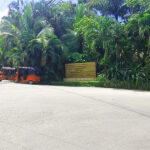 Embark on a picturesque journey to Nosara and Tamarindo with Gypsy Cab Nosara. Discover the tranquil beaches, vibrant surf spots, and culinary delights that await in these Costa Rican paradises. Your adventure begins here!
Embark on a picturesque journey to Nosara and Tamarindo with Gypsy Cab Nosara. Discover the tranquil beaches, vibrant surf spots, and culinary delights that await in these Costa Rican paradises. Your adventure begins here! - 10 Articles You Can Read on National Geographic About Costa Rica
 Explore the vibrant world of Costa Rica through ten insightful articles from National Geographic. Discover the country's rich biodiversity, culinary revolution, conservation efforts, and unique cultural practices.
Explore the vibrant world of Costa Rica through ten insightful articles from National Geographic. Discover the country's rich biodiversity, culinary revolution, conservation efforts, and unique cultural practices. - Costa Rica’s Journey to Independence: A Tapestry of Resilience and Unity
 Embark on a rich and vibrant journey through Costa Rica's path to independence. Discover the significant events, notable figures, and cultural narratives that have shaped this remarkable nation. Engage with the past and explore the promising road ahead, as we celebrate the spirit of 'Pura Vida' in modern Costa Rica.
Embark on a rich and vibrant journey through Costa Rica's path to independence. Discover the significant events, notable figures, and cultural narratives that have shaped this remarkable nation. Engage with the past and explore the promising road ahead, as we celebrate the spirit of 'Pura Vida' in modern Costa Rica. - Nosara vs. Santa Teresa: A Comprehensive Guide for Tourists by Gypsy Cab Nosara
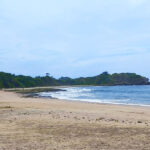 Explore the contrasting charms of Nosara and Santa Teresa with our comprehensive guide. From serene beaches to vibrant nightlife, discover which Costa Rican gem aligns with your travel dreams. Brought to you by Gypsy Cab Nosara.
Explore the contrasting charms of Nosara and Santa Teresa with our comprehensive guide. From serene beaches to vibrant nightlife, discover which Costa Rican gem aligns with your travel dreams. Brought to you by Gypsy Cab Nosara. - Introduction to Playa Guiones
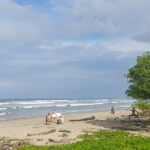 Discover the beauty and charm of Playa Guiones, a surfer's paradise nestled in Nosara, Guanacaste. Learn about its rich biodiversity, unique culture, and the range of activities and services it offers.
Discover the beauty and charm of Playa Guiones, a surfer's paradise nestled in Nosara, Guanacaste. Learn about its rich biodiversity, unique culture, and the range of activities and services it offers. - Gypsy Cab Nosara Shuttle Service to Boutique Hotel Lagarta Lodge: An In-Depth Review
 Experience the magic of Nosara with Gypsy Cab Nosara's shuttle service and discover the luxury and sustainability of the Boutique Hotel Lagarta Lodge. Dive into our in-depth review and let Costa Rica's gem captivate you
Experience the magic of Nosara with Gypsy Cab Nosara's shuttle service and discover the luxury and sustainability of the Boutique Hotel Lagarta Lodge. Dive into our in-depth review and let Costa Rica's gem captivate you - Nosara vs. Samara: A Detailed Comparison to Help You Choose Your Ideal Costa Rican Destination
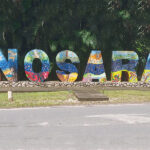 Discover the hidden gem of Costa Rica in our ultimate Nosara travel guide. Explore stunning beaches, world-class surf breaks, lush wildlife reserves, and a thriving yoga scene. Start planning your trip to Nosara today!
Discover the hidden gem of Costa Rica in our ultimate Nosara travel guide. Explore stunning beaches, world-class surf breaks, lush wildlife reserves, and a thriving yoga scene. Start planning your trip to Nosara today! - Gypsy Cab Nosara Shuttle Service to The Gilded Iguana Surf Hotel: A Comprehensive Review
 Experience the magic of Nosara with The Gilded Iguana Surf Hotel. Dive into our comprehensive review, from its rich history to modern amenities, and discover the convenience of the Gypsy Cab Nosara shuttle service from Liberia Airport.
Experience the magic of Nosara with The Gilded Iguana Surf Hotel. Dive into our comprehensive review, from its rich history to modern amenities, and discover the convenience of the Gypsy Cab Nosara shuttle service from Liberia Airport. - Your Comprehensive Guide to Flying to Nosara, Costa Rica
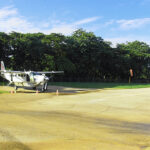 Plan your trip to Nosara, Costa Rica with our comprehensive guide. Learn about flight options, airlines, booking tips, and more to ensure a smooth journey.
Plan your trip to Nosara, Costa Rica with our comprehensive guide. Learn about flight options, airlines, booking tips, and more to ensure a smooth journey. - Experience Unforgettable Beach Vacations with BeachManagementNosara
 Experience unforgettable beach vacations with Beach Management Nosara. Choose from a variety of luxurious vacation houses, each offering a unique blend of comfort, luxury, and a close connection to nature. Enjoy top-notch amenities and services, including property management, vacation rentals, and concierge services, all designed to ensure a memorable stay in Nosara, Costa Rica.
Experience unforgettable beach vacations with Beach Management Nosara. Choose from a variety of luxurious vacation houses, each offering a unique blend of comfort, luxury, and a close connection to nature. Enjoy top-notch amenities and services, including property management, vacation rentals, and concierge services, all designed to ensure a memorable stay in Nosara, Costa Rica.
- Nosara vs. Tamarindo: Your Ultimate Guide to Choosing the Perfect Costa Rican Destination – A Gypsy Cab Nosara Exclusive
- 10 Articles You Can Read on National Geographic About Costa Rica
- Costa Rica’s Journey to Independence: A Tapestry of Resilience and Unity
- Nosara vs. Santa Teresa: A Comprehensive Guide for Tourists by Gypsy Cab Nosara
- Introduction to Playa Guiones

